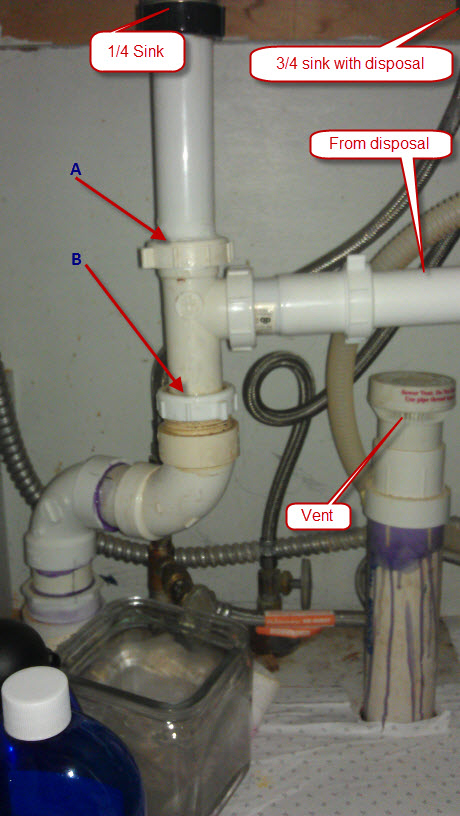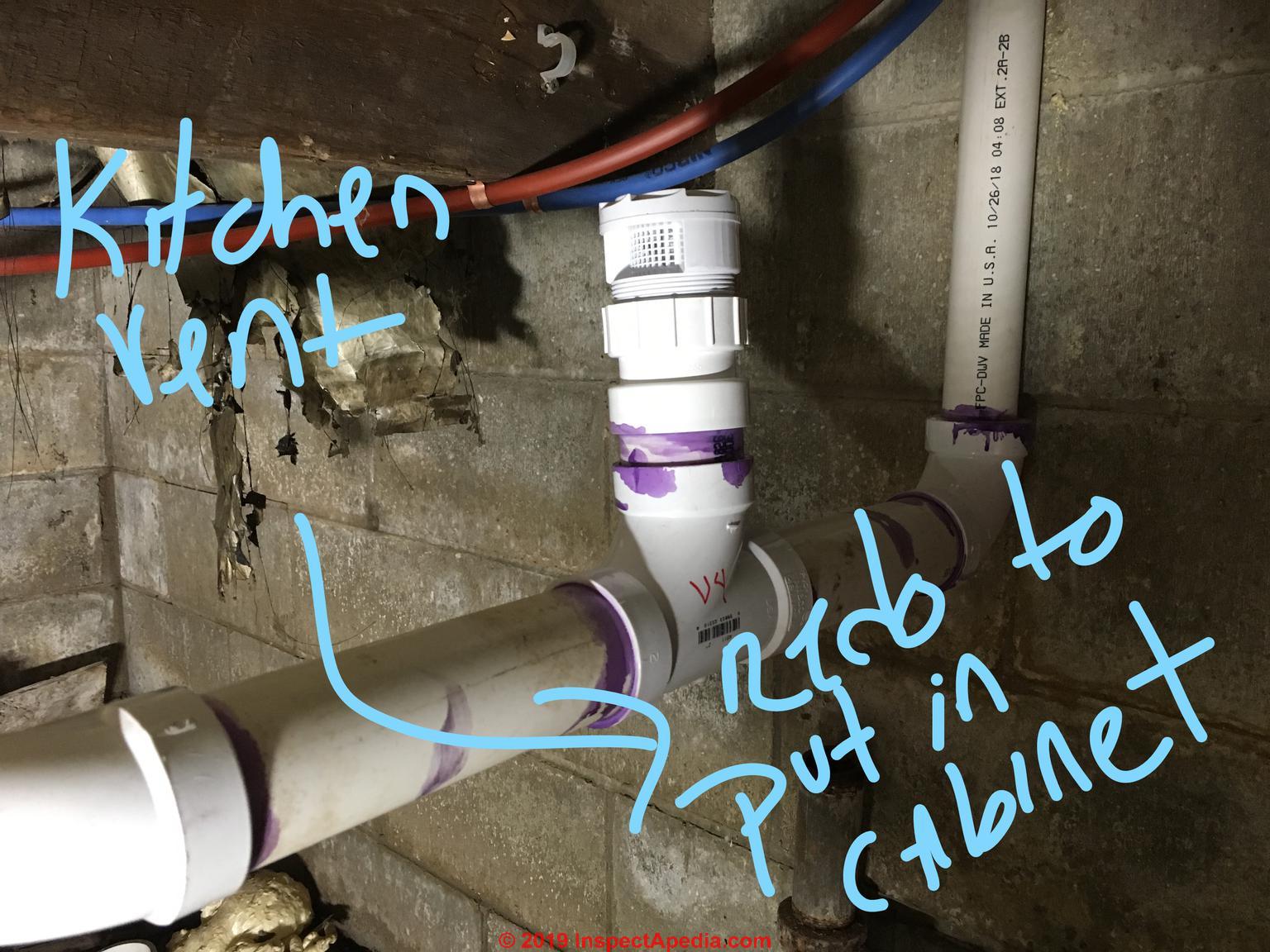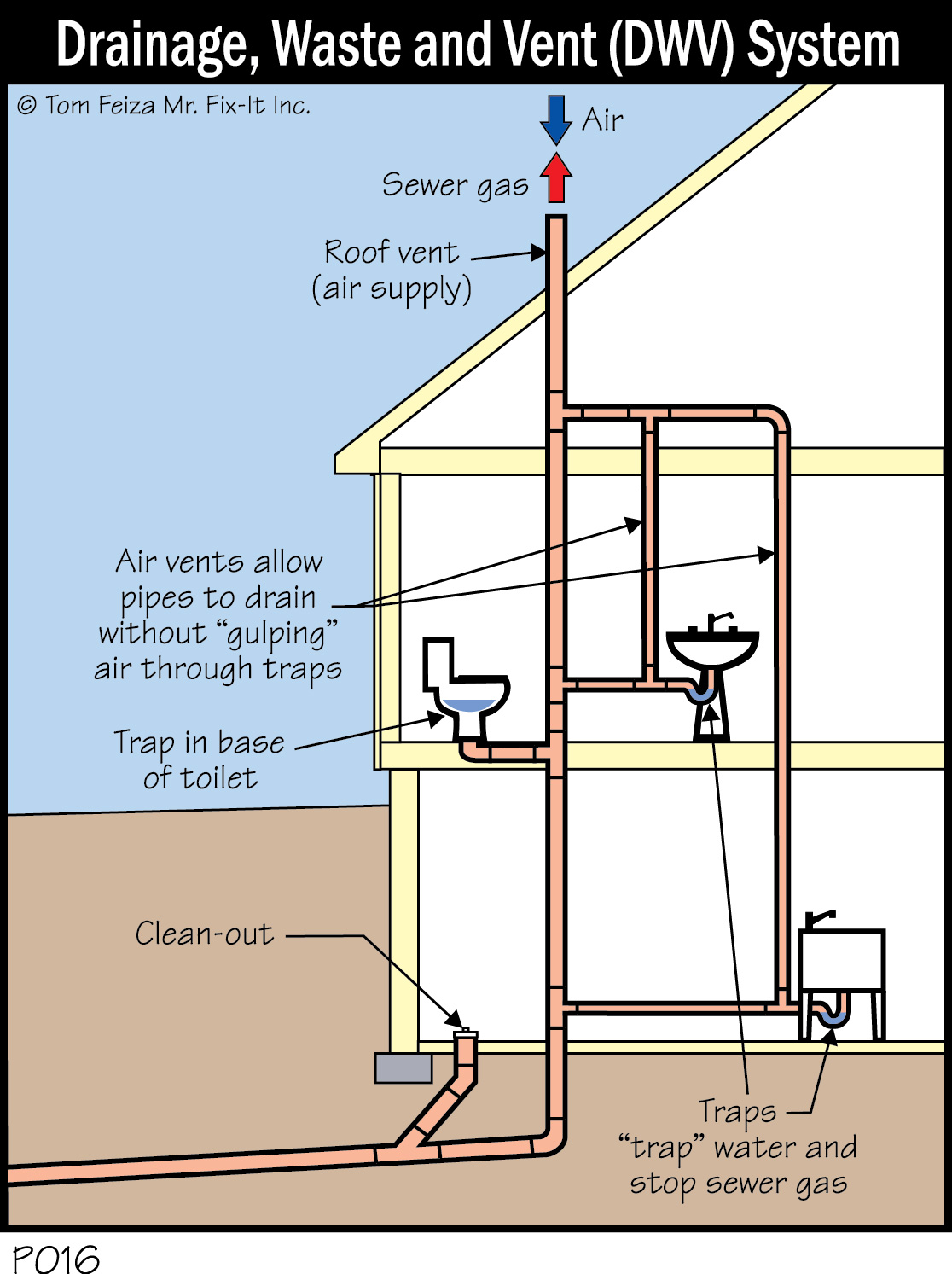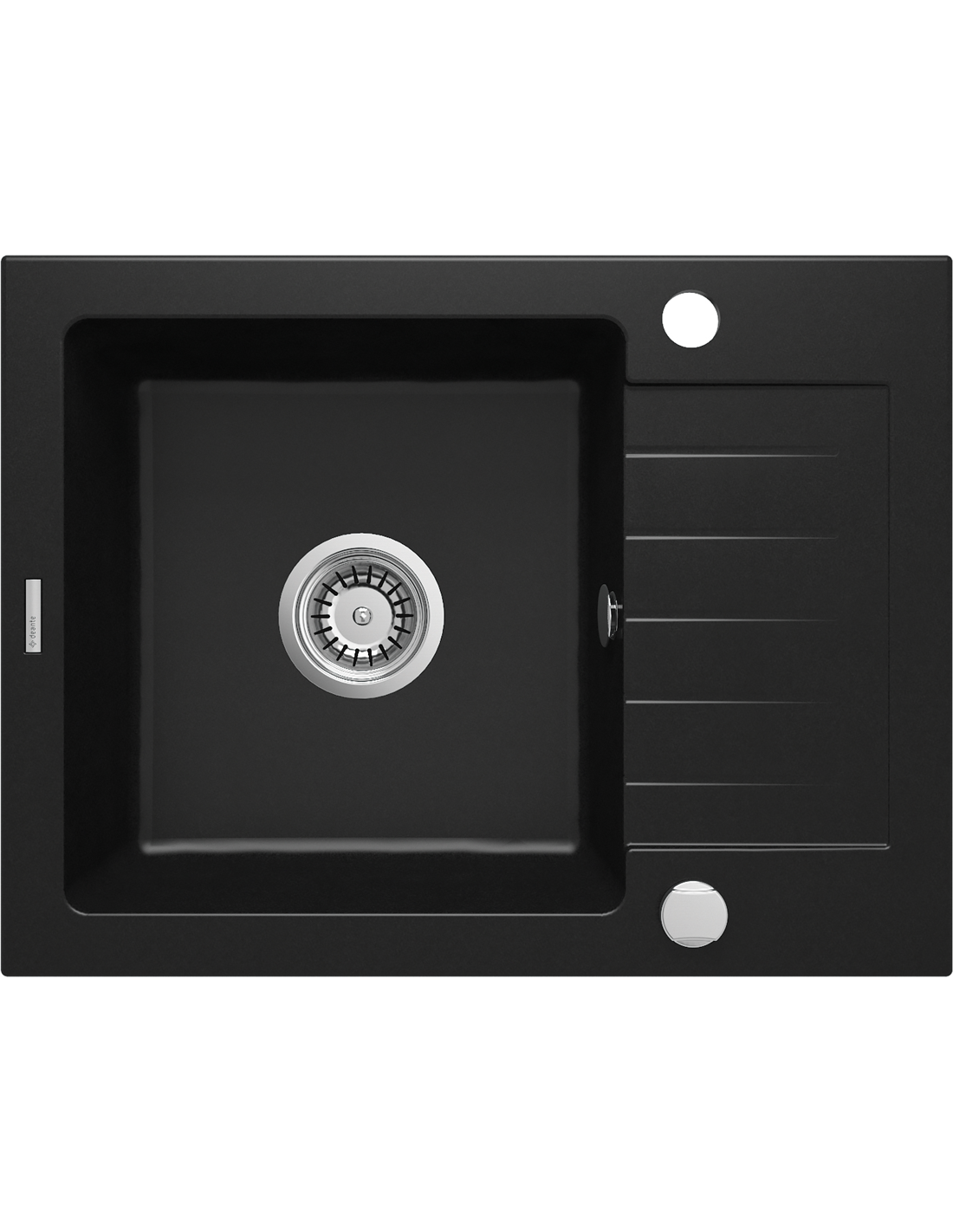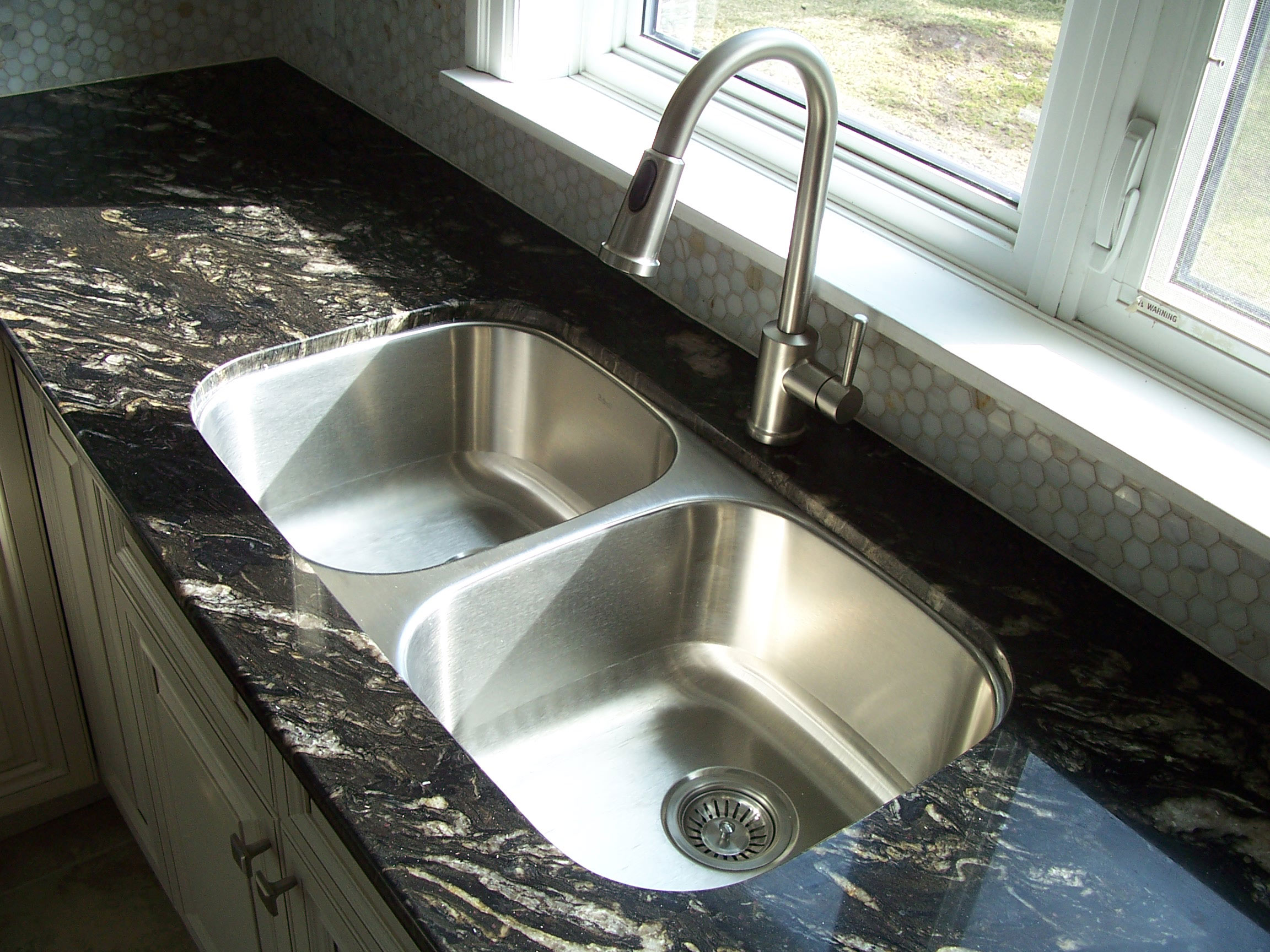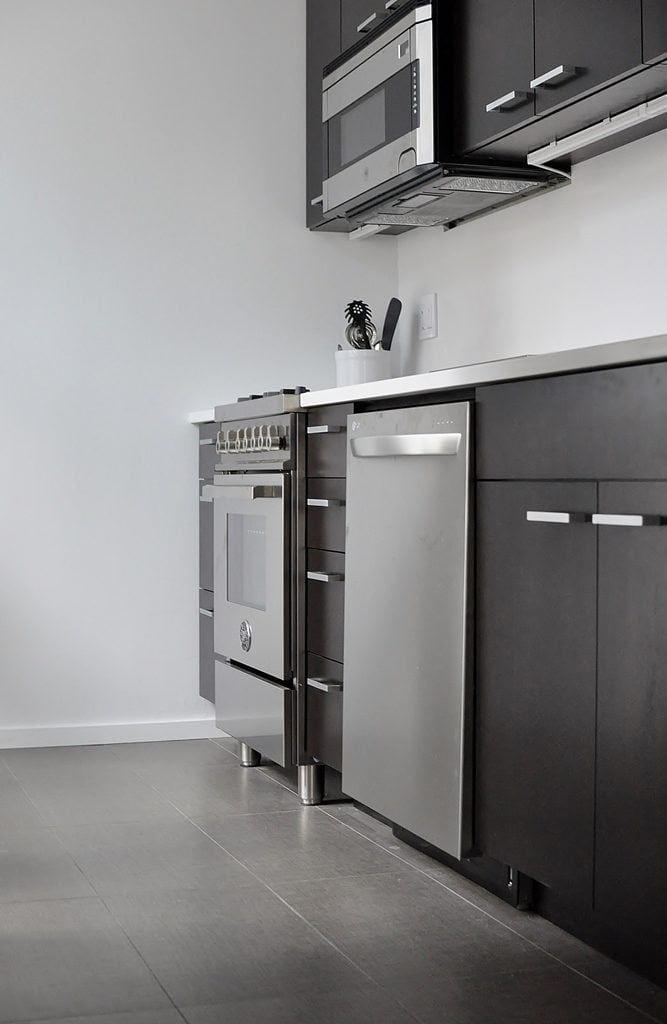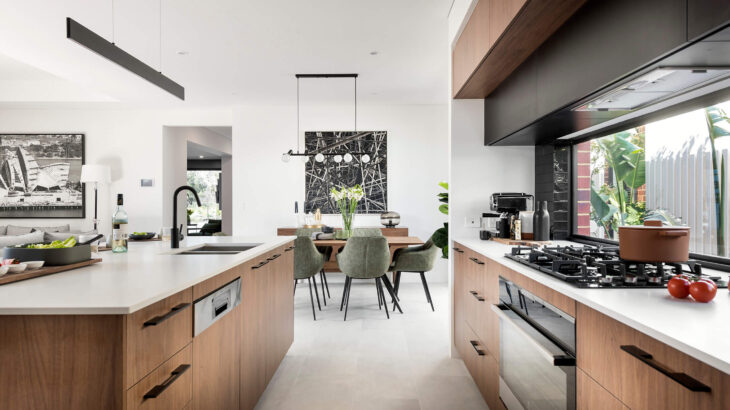Proper kitchen sink venting is essential for the functionality and longevity of your kitchen plumbing system. Without proper venting, your sink can become clogged, produce foul odors, and even cause damage to your pipes. To avoid these issues, here are ten tips to follow for proper kitchen sink venting.Proper Kitchen Sink Venting: 10 Tips to Follow
Before we dive into the tips, it's important to understand how to properly vent a kitchen sink. The purpose of a vent is to allow air to flow into the plumbing system, preventing a vacuum from forming and allowing wastewater to drain properly. This is typically achieved through a vent pipe that connects to the drainpipe under your sink and leads to the outside of your home. Now, let's get into the tips.How to Properly Vent a Kitchen Sink
Proper kitchen sink venting is crucial for several reasons. Firstly, it prevents clogs by allowing air to flow freely through the pipes, preventing water from backing up. It also reduces the risk of foul odors emanating from your sink. Additionally, without proper venting, your pipes can become damaged from the pressure caused by a vacuum forming. Therefore, it's essential to ensure your kitchen sink is properly vented.The Importance of Proper Kitchen Sink Venting
Many homeowners make mistakes when it comes to venting their kitchen sink. One common mistake is not having a vent at all. Some older homes may not have been built with proper venting, and it's important to remedy this issue. Another mistake is having a vent that is too small, causing inadequate airflow and potential clogs. It's also essential to make sure the vent pipe is installed at the correct angle for optimal airflow.Common Mistakes in Kitchen Sink Venting
To properly vent your kitchen sink, you need to understand the basics of how it works. As mentioned earlier, the vent allows air to flow into the plumbing system, preventing a vacuum from forming. This is called the "stack effect," where air moves from high pressure to low pressure. The vent pipe should be installed vertically and extend above the roofline to allow for the stack effect to work effectively.Understanding the Basics of Kitchen Sink Venting
If you have a double kitchen sink, you may need to consider additional venting options. One option is to install a separate vent for each sink, which may be necessary if the sinks are on opposite sides of the room. Another option is to use a combination waste and vent system, which uses a single vent pipe for both sinks. It's essential to consult a professional plumber to determine the best venting solution for your double kitchen sink.Proper Venting for a Double Kitchen Sink
If you're adding a new sink or remodeling your kitchen, it's crucial to ensure proper venting is installed. The vent pipe should be located behind the sink and should be angled slightly towards the main drain line. It's essential to follow building codes and consult a professional plumber to ensure proper installation. Additionally, make sure the vent pipe is not obstructed by any other plumbing or structural elements.How to Install Proper Venting for a Kitchen Sink
Proper kitchen sink venting comes with many benefits. Firstly, it ensures your plumbing system functions properly, preventing clogs and damage to your pipes. It also helps to prevent foul odors from entering your home. Proper venting can also improve the overall efficiency of your plumbing system, reducing the need for repairs and saving you money in the long run.The Benefits of Proper Kitchen Sink Venting
If your kitchen sink is located in the basement, proper venting is even more critical. In this case, you may need to use a vent that extends horizontally from the sink to the outside of your home. This can be achieved using a studor vent, which is a valve that allows air to flow in one direction but not the other. Alternatively, you may need to run a vent pipe through the ceiling and out the roof.Proper Venting Solutions for a Kitchen Sink in a Basement
If you're remodeling your kitchen, it's essential to ensure proper venting is installed. This may involve relocating the sink or adding additional venting if needed. A professional plumber can help you determine the best solution for your specific kitchen layout and needs. It's essential to consider venting during the planning stage of your remodel to avoid any issues in the future.Ensuring Proper Venting for a Kitchen Sink in a Remodel
Why Proper Kitchen Sink Venting is Crucial for Your House Design

The Importance of Proper Ventilation in the Kitchen
 Proper ventilation is an essential aspect of any house design, especially in the kitchen. This is because the kitchen is one of the most used areas in a home, and it is where a variety of activities take place, including cooking, washing dishes, and disposing of food waste. Without proper ventilation, these activities can lead to the build-up of unpleasant odors, excess moisture, and harmful pollutants in the air. Not only can this make your kitchen uncomfortable to work in, but it can also have negative effects on your health. That is why it is crucial to pay attention to
proper kitchen sink venting
when designing or remodeling your home.
Proper ventilation is an essential aspect of any house design, especially in the kitchen. This is because the kitchen is one of the most used areas in a home, and it is where a variety of activities take place, including cooking, washing dishes, and disposing of food waste. Without proper ventilation, these activities can lead to the build-up of unpleasant odors, excess moisture, and harmful pollutants in the air. Not only can this make your kitchen uncomfortable to work in, but it can also have negative effects on your health. That is why it is crucial to pay attention to
proper kitchen sink venting
when designing or remodeling your home.
The Basics of Kitchen Sink Venting
 Before we dive into the importance of
kitchen sink venting
, it is essential to understand what it is and how it works. Kitchen sink venting is a system that allows air to flow in and out of your plumbing system, maintaining proper pressure and preventing blockages. It consists of a vent pipe that runs from your kitchen sink drain to the outside of your home, typically through the roof. This pipe allows air to enter the plumbing system, equalizing the pressure and preventing water from being siphoned out of the traps in your sink and other fixtures.
Before we dive into the importance of
kitchen sink venting
, it is essential to understand what it is and how it works. Kitchen sink venting is a system that allows air to flow in and out of your plumbing system, maintaining proper pressure and preventing blockages. It consists of a vent pipe that runs from your kitchen sink drain to the outside of your home, typically through the roof. This pipe allows air to enter the plumbing system, equalizing the pressure and preventing water from being siphoned out of the traps in your sink and other fixtures.
Preventing Unpleasant Odors and Excess Moisture
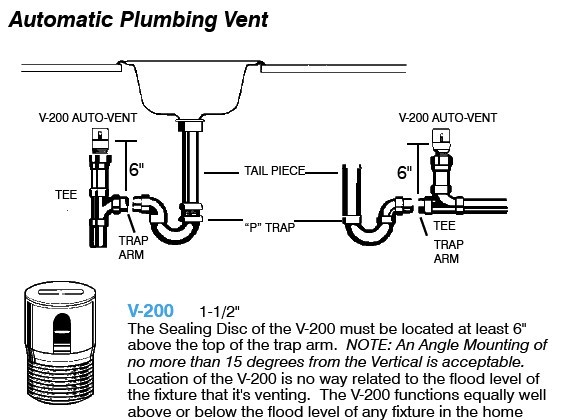 One of the main reasons why
proper kitchen sink venting
is crucial is to prevent the build-up of unpleasant odors and excess moisture in your kitchen. When you wash dishes or dispose of food waste, it can create a foul smell that can linger in your kitchen. Without proper ventilation, this odor can spread throughout your home, making it unpleasant for you and your family. Additionally, moisture from cooking and washing can also build up in your kitchen, leading to mold and mildew growth. Proper venting allows this moisture to escape, keeping your kitchen dry and preventing potential health hazards.
One of the main reasons why
proper kitchen sink venting
is crucial is to prevent the build-up of unpleasant odors and excess moisture in your kitchen. When you wash dishes or dispose of food waste, it can create a foul smell that can linger in your kitchen. Without proper ventilation, this odor can spread throughout your home, making it unpleasant for you and your family. Additionally, moisture from cooking and washing can also build up in your kitchen, leading to mold and mildew growth. Proper venting allows this moisture to escape, keeping your kitchen dry and preventing potential health hazards.
Ensuring a Healthy Living Environment
 Proper kitchen sink venting is also essential for maintaining a healthy living environment. As mentioned earlier, without proper ventilation, harmful pollutants can build up in the air in your kitchen. These pollutants can come from cooking fumes, cleaning chemicals, and even gas leaks from your stove. Breathing in these pollutants can have adverse effects on your health, especially for those with respiratory issues. Proper venting allows these pollutants to escape, ensuring a cleaner and healthier environment for you and your family.
In conclusion,
proper kitchen sink venting
is crucial for your house design, not only for the functionality of your plumbing system but also for the comfort and health of your household. If you are designing or remodeling your home, make sure to pay attention to the ventilation in your kitchen, including the
kitchen sink venting
system. It may seem like a small detail, but it can make a significant difference in the overall livability of your home. Don't overlook the importance of proper ventilation in your kitchen – it's an investment that will benefit you and your family in the long run.
Proper kitchen sink venting is also essential for maintaining a healthy living environment. As mentioned earlier, without proper ventilation, harmful pollutants can build up in the air in your kitchen. These pollutants can come from cooking fumes, cleaning chemicals, and even gas leaks from your stove. Breathing in these pollutants can have adverse effects on your health, especially for those with respiratory issues. Proper venting allows these pollutants to escape, ensuring a cleaner and healthier environment for you and your family.
In conclusion,
proper kitchen sink venting
is crucial for your house design, not only for the functionality of your plumbing system but also for the comfort and health of your household. If you are designing or remodeling your home, make sure to pay attention to the ventilation in your kitchen, including the
kitchen sink venting
system. It may seem like a small detail, but it can make a significant difference in the overall livability of your home. Don't overlook the importance of proper ventilation in your kitchen – it's an investment that will benefit you and your family in the long run.





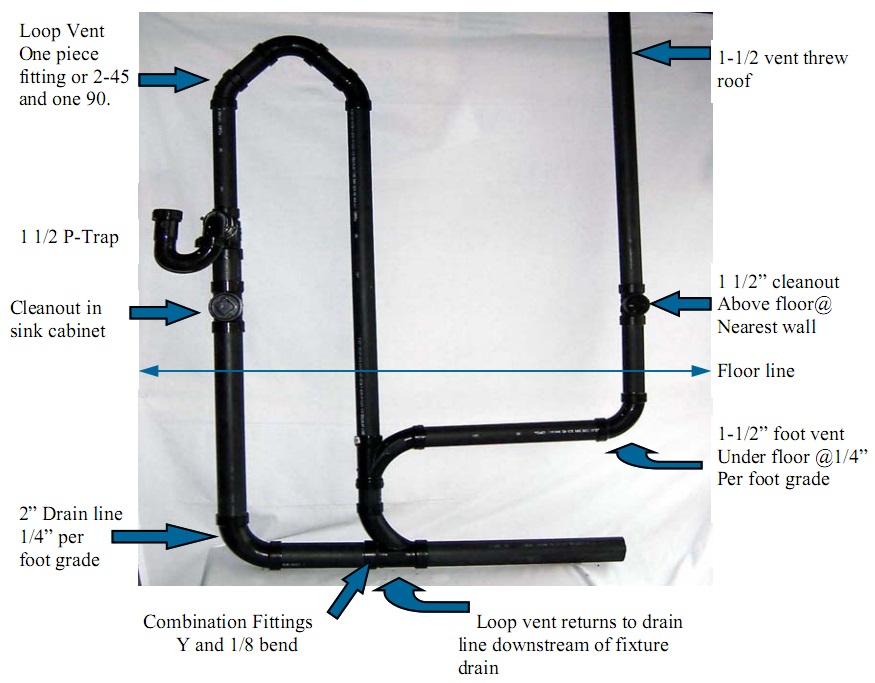






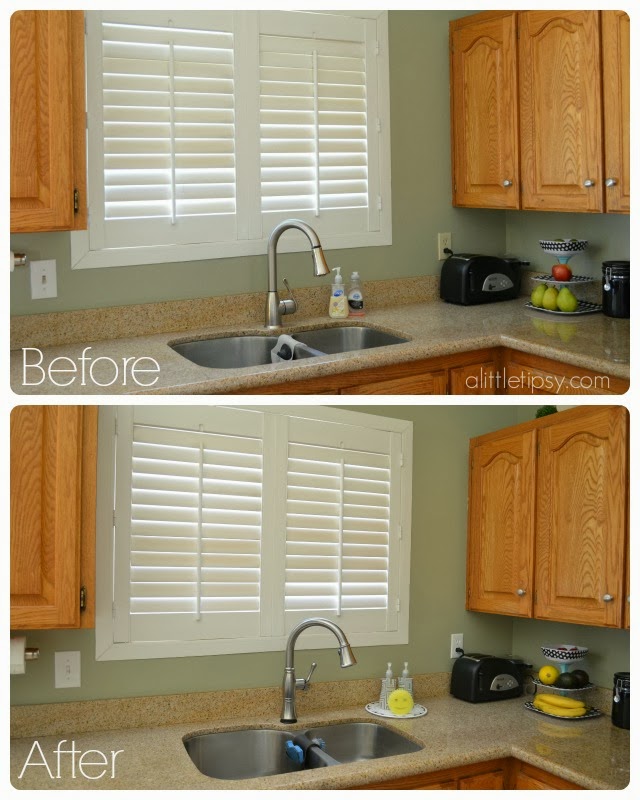





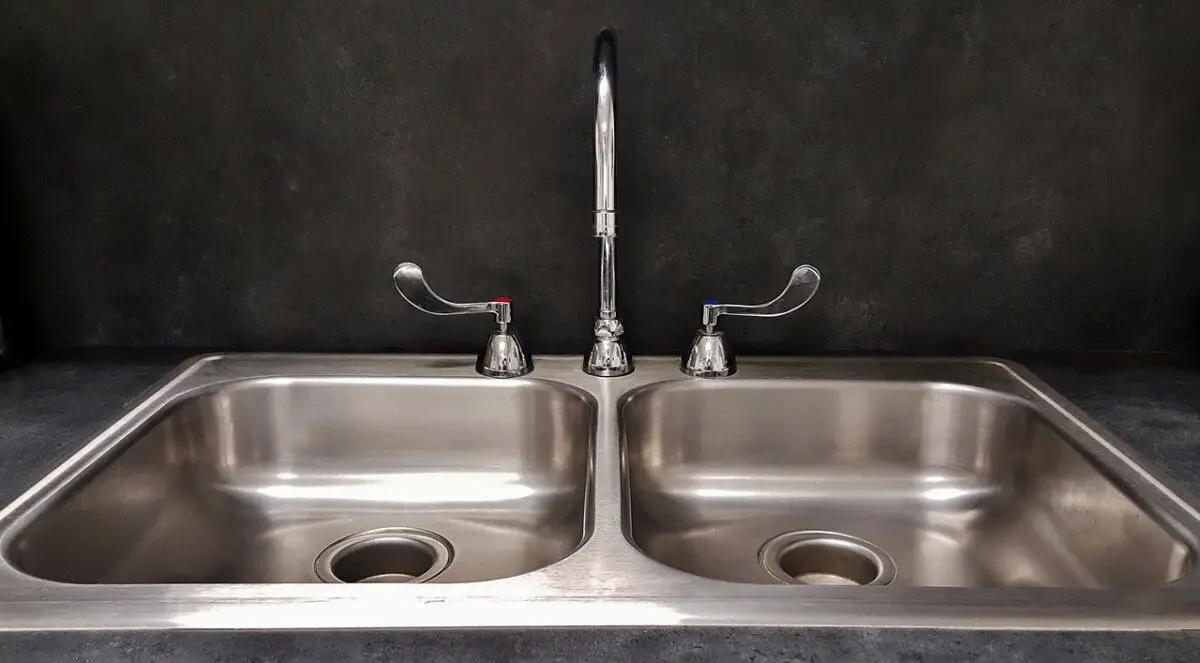





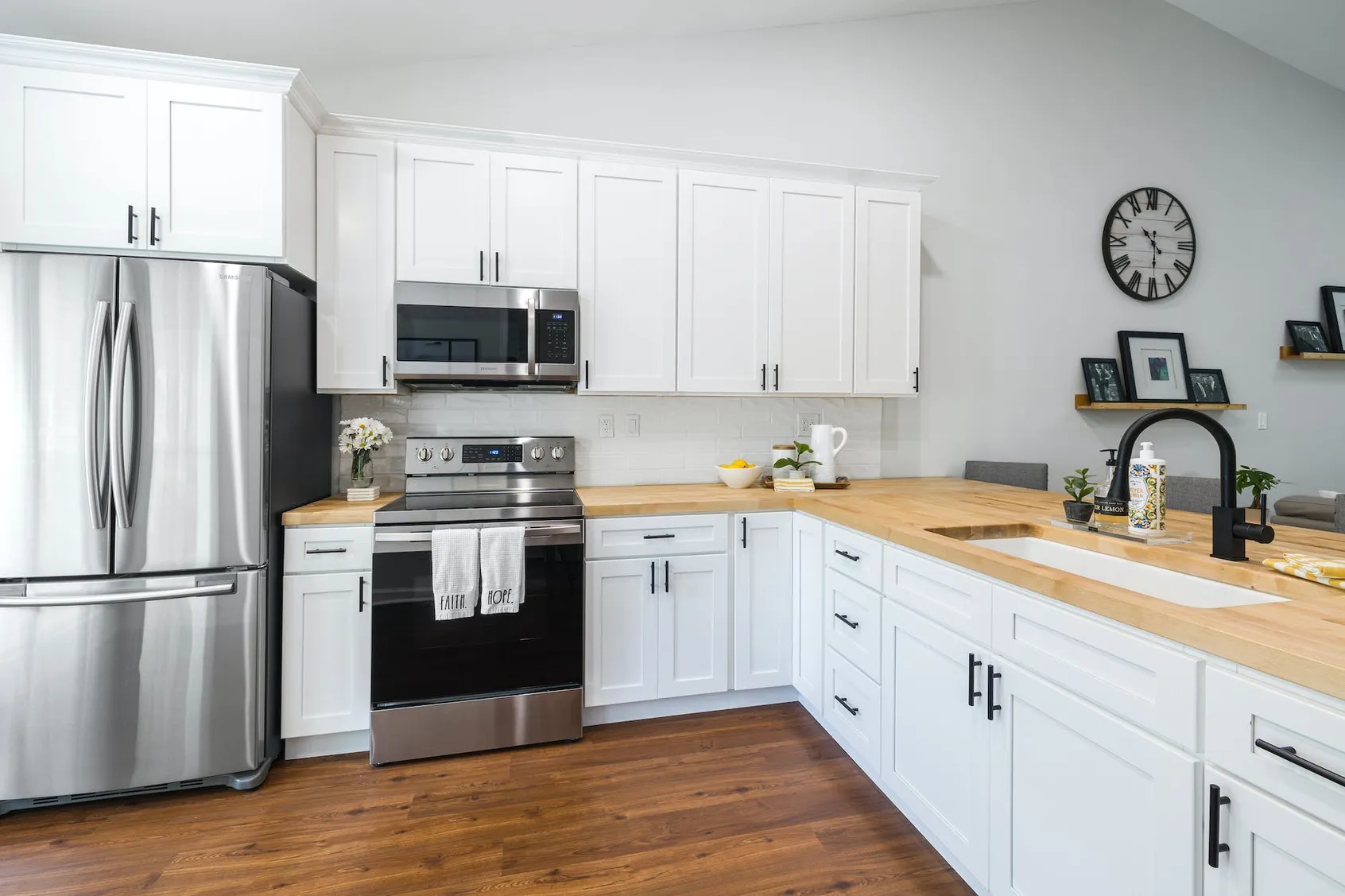


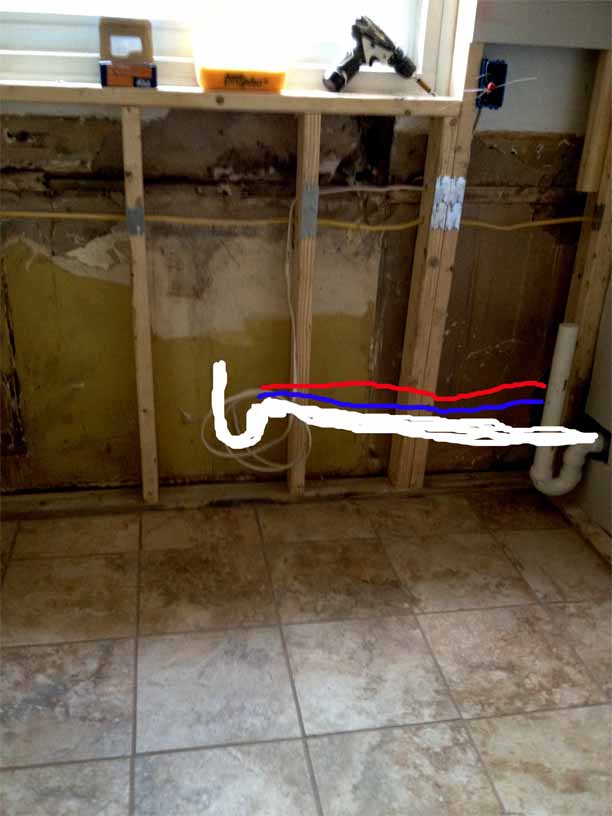










:max_bytes(150000):strip_icc()/venting-sink-diagram-f8f9759a-1047c08369d24101b00c8340ba048950.jpg)
